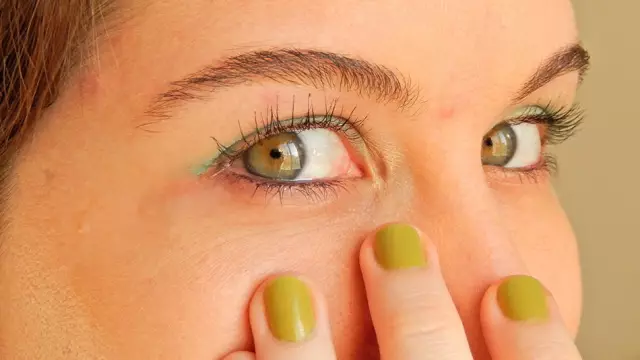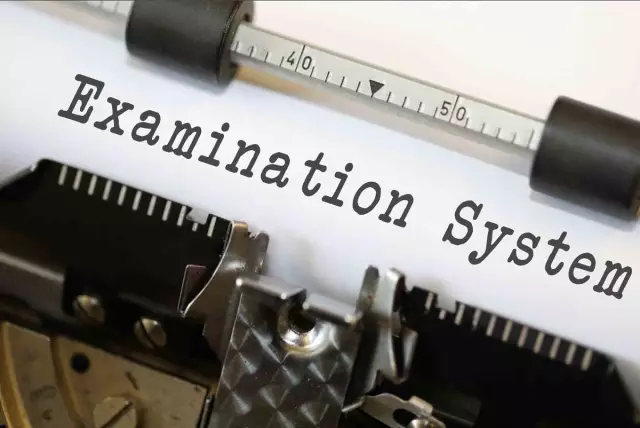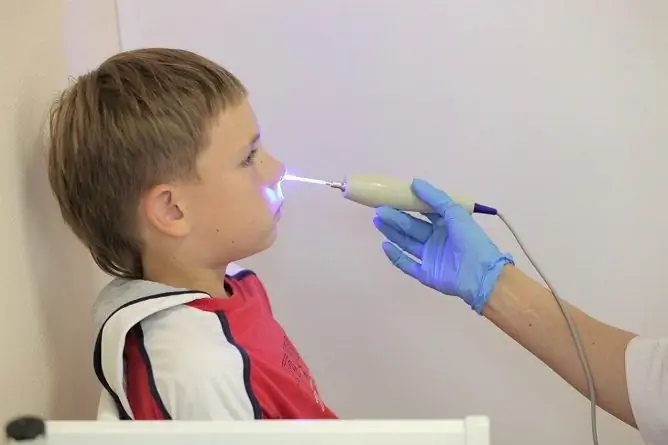- Author Rachel Wainwright [email protected].
- Public 2023-12-15 07:39.
- Last modified 2025-11-02 20:14.
A second description of laser vision correction surgery: a complete guide for those who are afraid
“… I'm not afraid of what will happen next, I'm afraid of
laser vision correction itself, when half of my eyes are
cut off! … I even have nightmares at night …"
Spied on the forum
Vision correction is one of the least traumatic surgical procedures. Nevertheless, it is natural to be worried about the forthcoming intervention. Another thing is when fear interferes with rationally perceiving what is happening and generally living. Basically, people are afraid of a distorted view of the course of the operation. The founder and director of the Omicron network of ophthalmological clinics, Alexander Padar, spoke about this procedure in as much detail as possible.
So, the most complete description of the sensations during the operation or how to overcome the fear of laser vision correction!

Preparatory stage of the operation: 30 minutes
A person comes to the clinic on the appointed date 30 minutes before the X hour. He must be examined by a doctor. The patient must be absolutely healthy. Residual cough and runny nose are not allowed.
The surgeon, together with the patient, examines his data once again, several times pronounces the algorithm of actions. During the operation, the surgeon will also explain each step, which will help the patient to be less nervous and the doctor to control their well-being.
If the doctor sees severe excitement, he will suggest taking pills to calm down. The operation is not performed under anesthesia. The patient needs to react with his eyes to accurately center the laser.
The strongest anesthetic is instilled into the patient's eyes. It suppresses all the sensitivity of the eye, thereby achieving absolute painlessness. However, the sensation of touching the eye may remain. Which, in fact, is not scary. Especially for those who have experience wearing contact lenses.
The patient lies down on the operating table. At this moment, many people note an increase in heart rate. When the body position changes from vertical to horizontal, this is a normal reaction of the body.
To disinfect the surface, the eyelids are treated with a special alcohol-containing solution. A person can smell a characteristic smell.
The surgeon covers the patient's face with a sterile napkin - the operating field, and he finds himself in a closed space, as it were. For many, this calms down and helps them to concentrate better. For those who are afraid of confined spaces, let's say that a napkin made of translucent material has never caused panic in anyone:) A couple of slow and deep breaths will help to cope with anxiety.
An eyelid speculum is inserted into the eye. It sounds scary, because the eye involuntarily closes its eyes when something foreign hits it. But in fact, the installation is completed so quickly that the patient does not have time to understand and react.
The eye is prepared. The patient's head rests on a special cradle, on which it is difficult to move without a conscious strong effort. It is now impossible to cough, sneeze, all the more to jerk your legs (and rarely does anyone want to).
Start of operation: 10 - 15 seconds
The vast majority of vision correction operations are now performed using the LASIK method. It is less traumatic compared to the older PRK (photorefractive keratectomy) method, has a shorter recovery period and allows correction for people even with a thin cornea. Therefore, we will describe it.
So, the person breathes calmly and looks at the fixation light that is present in the laser. 10-15 seconds. The light blinks so that it is convenient to keep your eyes on it. At this time, the laser is centered in relation to the optical axis of the eye, the eye is fixed with a contact instrument (microkeratome), and a corneal flap is formed. Microkeratome captures the eye gently, like a small suction cup. At this time, a person may feel a touch and for some time lose sight of the fixation light. The flap is trimmed on one side and folded to the side. The average thickness of the cornea is half a millimeter. Only its uppermost layer is trimmed - a thin petal, about 100 microns.
If the flap is formed with a femtosecond laser, the patient will not feel anything at all. In this case, the corneal tissue is not cut, but exfoliates non-contact.

Directly the laser vision correction itself: 20 seconds
Then the excimer laser works for 20 seconds. The man looks at the light and tries not to move his eye. At this time, the tissue is evaporated by the laser, a new corneal profile is formed. There are no sensations during the laser vision correction itself. A person can smell only a slight smell of singed skin.
The eye is not fixed by any instruments, only due to the fact that the gaze is directed to the light. The eye can be taken to the side. Nothing bad will happen. Protection will work and the car will stop. As soon as the patient fixes his gaze on the light again, the laser will continue to work from the place where it was interrupted.
The individual parameters of the eye are put into the machine in advance and the program itself, without human intervention, calculates with absolute accuracy the algorithm for influencing the cornea, depending on the degree of visual impairment and the presence of concomitant pathologies, for example, astigmatism. The whole procedure is fully automated and controlled by machine intelligence. The doctor only helps to interact between the patient and the machine. However, if a hypothetical need suddenly arises, the surgeon can stop the operation at any time.
Hardware failure is excluded, since before each operation the machine passes 10-15 internal tests and if at least one of them is not passed, it will not work. Each machine is equipped with batteries for uninterrupted power supply. In general, everything is thought out and provided for.
Final stage of the operation: 10 seconds
The corneal flap is replaced. Due to the fact that it is not completely cut off, and, due to its natural stickiness, it fits smoothly and tightly with the cut. The eye is flushed with saline. At this point, the patient may feel coldness in the eye area. All. The operation is over.
Visual acuity immediately after completion of laser correction - 100%. The patient can, for example, make out the hands of the clock that are in every operating room.
The action of the anesthetic will continue for another 10-15 minutes. The patient puts on sunglasses, leaves the operating room and goes to the waiting room.

After surgery: 30 minutes
The first three hours after laser vision correction, pain may be present. There are many nerve endings in the cornea and the wound surface on it will cause discomfort. The intensity of pain by patients is experienced in different ways and depends, among other things, on the emotional makeup of a person. In principle, the sensations after laser correction can be compared to a cut on the arm. Any pain reliever can be taken as needed.
The light will irritate the eyes at first, so we recommend spending several hours in a room with dim light, with an optimal level of humidity, and wearing sunglasses.
30 minutes after the operation, the doctor examines, explains how to care for the eyes, and issues a prescription for special drops. After all the postoperative recommendations, the patient is allowed to go home.
The entire stage of the intervention lasts no more than 5 minutes. The depth of impact is measured in microns and is carefully controlled by high-precision artificial intelligence. The human factor is completely excluded. Unless a mistake can be made when entering data. Therefore, carefully choose the clinic and the attending physician, whose professionalism you will not doubt.
If in laser vision correction it is the thought of manipulating the eye that scares you, you should try to use contact lenses for a while. They simulate 80-90% of the visual sensations before and after the operation. Repeatedly experiencing the situation when the cornea is touched will allow you to psychologically prepare for the operation. In addition, wearing lenses lowers the sensitivity threshold of the eye.
The correct psychological attitude before the operation is very important for facilitating the recovery period. A thorough study of a disturbing issue can certainly help to cope with irrational fears, such as that "the eye will be burned" or "cut off". If you still have questions, the ophthalmologists of our clinic, as part of the consultation, are ready to explain each stage of laser vision correction and will help to separate speculation from reality.
Do you want to know how to improve your vision without having to undergo surgery? Read about 9 ways to improve your eyesight on your own.
Have a nice sight!
Found a mistake in the text? Select it and press Ctrl + Enter.






